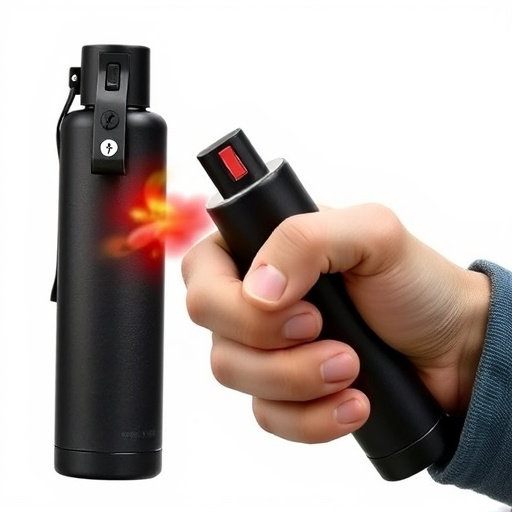Capsaicin, the active ingredient in chili peppers and found in pepper spray, requires careful disposal due to its potency and environmental impact. To responsibly dispose of expired pepper spray, check expiration dates, locate nearby hazardous waste drop-off points, avoid discarding in regular trash or drains, and securely transport the can using designated containers. Always follow local guidelines for hazardous waste disposal to ensure safety and prevent harm to wildlife and water sources.
“Discover the power of nature’s defense mechanism with our in-depth look at capsaicin-based personal protection devices. We explore how this natural compound, found in peppers, transforms into potent self-defense tools. From its origins to practical applications, this article unravels the science behind pepper spray.
Furthermore, we delve into the environmental impact and responsible disposal of expired pepper spray, offering a comprehensive guide to ensure safety and sustainability. Learn the step-by-step process for getting rid of old pepper spray, leaving you equipped with essential knowledge.”
- Understanding Capsaicin and its Role in Personal Protection Devices
- The Life Cycle of Pepper Spray: From Creation to Disposal
- Step-by-Step Guide: How to Dispose Expired Pepper Spray Safely and Responsibly
Understanding Capsaicin and its Role in Personal Protection Devices
Capsaicin, the active ingredient in chili peppers, has emerged as a powerful tool in personal protection devices, notably pepper spray. This chemical compound is responsible for the burning sensation associated with spicy foods and, in higher concentrations, can incapacitate an attacker temporarily. When incorporated into personal defense tools, capsaicin creates an effective non-lethal deterrent. It works by disrupting the transmission of pain signals to the brain, causing the target to experience a strong irritation and temporary blindness, enabling the user to escape or defend themselves.
Proper disposal of expired pepper spray is a crucial consideration for users and environmental safety. Unlike traditional waste disposal methods, capsaicin-based products require specific handling due to their potent nature. Users should refer to local guidelines or consult manufacturers’ instructions on how to dispose of expired pepper spray safely, ensuring it doesn’t fall into the wrong hands or cause harm to wildlife or water sources.
The Life Cycle of Pepper Spray: From Creation to Disposal
Pepper spray, a potent personal protection device derived from capsaicin, goes through a distinct life cycle from its creation to disposal. The process begins with the extraction of capsaicin from chili peppers, often through specialized distillation methods. This active ingredient is then carefully formulated and mixed with other components to create the final pepper spray product.
Disposal of expired or unused pepper spray is a crucial consideration. Unlike many consumer products, proper disposal isn’t as simple as tossing it in the trash. Due to its active capsaicin content, expired pepper spray should be handled and disposed of carefully to prevent any potential harm or environmental impact. The recommended approach is to follow local guidelines for hazardous waste disposal, ensuring that it’s collected and treated by authorized facilities to mitigate any risks associated with its chemical composition.
Step-by-Step Guide: How to Dispose Expired Pepper Spray Safely and Responsibly
To ensure safety and environmental responsibility, proper disposal of expired pepper spray is crucial. Begin by checking the expiration date on the can. If it’s passed its use-by date, don’t use it under any circumstances. Pepper spray, even when expired, retains some potency, so discarding it responsibly minimizes potential hazards.
Next, locate a designated drop-off point for hazardous waste in your area. Many law enforcement agencies and fire stations accept expired or unused pepper spray for safe disposal. Never empty the contents into regular trash or pour down the drain. This can cause environmental pollution and harm to wildlife and water sources. Simply place the entire can in the provided container, ensuring it’s secure to prevent accidental discharge during transport.
In conclusion, a capsaicin-based personal protection device, such as pepper spray, can provide crucial safety for individuals. However, understanding its life cycle and proper disposal methods, especially for expired units, is essential. By following the step-by-step guide on how to dispose of expired pepper spray safely, users can ensure they are not only protecting themselves but also contributing to a responsible and sustainable approach to personal protection.
